Guanidine nitrate
Synonym(s):Guanidinium nitrate
- CAS NO.:506-93-4
- Empirical Formula: CH6N4O3
- Molecular Weight: 122.08
- MDL number: MFCD00013028
- EINECS: 208-060-1
- SAFETY DATA SHEET (SDS)
- Update Date: 2025-09-25 17:15:13

What is Guanidine nitrate?
Chemical properties
solid
The Uses of Guanidine nitrate
Guanidine nitrate is the salt formed from guanidine and nitric acid and has been used as a high energy fuel used in gas generators and propellant applications.
The Uses of Guanidine nitrate
Guanidine nitrate has been used:
- in ammonium nitrate explosive formulations and in various propellant applications including triple-base gun propellants
- to examine the vapor signatures of the nitrate salts of guanidine by isothermal thermogravimetric method
General Description
Guanidine nitrate (GN) is an explosive used by the military and commercial sectors. Decomposition of guanidine nitrate has been investigated.
Hazard
Strong oxidant, may ignite organic materials on contact, may explode by shock or heat.
Flammability and Explosibility
Not classified
Properties of Guanidine nitrate
| Melting point: | 213-215 °C(lit.) |
| Boiling point: | 227.45°C (rough estimate) |
| Density | 1.44 |
| vapor pressure | 0Pa at 25℃ |
| refractive index | 1.4164 (estimate) |
| storage temp. | Store below +30°C. |
| solubility | water: soluble50mg/mL, clear to very slightly hazy, colorless |
| pka | 10.2[at 20 ℃] |
| PH | 4.9 (165g/l, H2O, 25℃) |
| Water Solubility | 130 g/L (20 ºC) |
| Merck | 14,4562 |
| BRN | 3596600 |
| Stability: | May explode if heated. May be shock sensitive. |
| CAS DataBase Reference | 506-93-4(CAS DataBase Reference) |
| EPA Substance Registry System | Guanidine nitrate (506-93-4) |
Safety information for Guanidine nitrate
| Signal word | Warning |
| Pictogram(s) |
 Flame Over Circle Oxidizers GHS03  Exclamation Mark Irritant GHS07 |
| GHS Hazard Statements |
H272:Oxidising liquids;Oxidising solids H302:Acute toxicity,oral H319:Serious eye damage/eye irritation H412:Hazardous to the aquatic environment, long-term hazard |
| Precautionary Statement Codes |
P210:Keep away from heat/sparks/open flames/hot surfaces. — No smoking. P220:Keep/Store away from clothing/…/combustible materials. P264:Wash hands thoroughly after handling. P264:Wash skin thouroughly after handling. P273:Avoid release to the environment. P301+P312:IF SWALLOWED: call a POISON CENTER or doctor/physician IF you feel unwell. P305+P351+P338:IF IN EYES: Rinse cautiously with water for several minutes. Remove contact lenses, if present and easy to do. Continuerinsing. |
Computed Descriptors for Guanidine nitrate
Guanidine nitrate manufacturer
New Products
4,4-Difluoropiperidine hydrochloride tert-butyl 9-methoxy-3-azaspiro[5.5]undecane-3-carboxylate Indole Methyl Resin N-Isopropylurea N,N-Dicyclohexylcarbodiimide(DCC) MELDRUMS ACID 5-METHYLISOXAZOLE-4-CARBOXYLIC ACID Magnessium Bis glycinate Zinc ascorbate 1-bromo-2-butyne 2-acetamidophenol 9(10H)-anthracenone Erythrosin B, 4-Piperidinopiperidine 2-((4-morpholinophenylamino) (methylthio) methylene) malononitrile 2,4-dihydroxybenzaldehyde 3-(4-morpholinophenylamino)-5-amino-1H-pyrazole-4-carbonitrile Methyl 2-methylquinoline-6-carboxylate 2,6-dichloro-4-nitropyridine 4-Bromo-2-chlorobenzonitrile 2-(benzylamino)acetic acid hydrochloride 4-(tert-Butoxycarbonylamino)but- 2-ynoic acid 3,4-dihydro-2H-benzo[b][1,4]dioxepine 1-Phenyl-1-cycloprppanecarboxylicacidRelated products of tetrahydrofuran
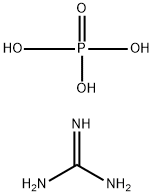
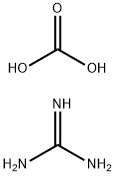


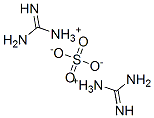
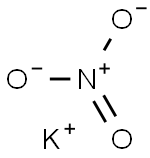
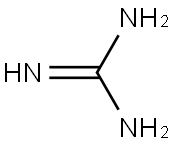

You may like
-
 Guanidine nitrate CAS 506-93-4View Details
Guanidine nitrate CAS 506-93-4View Details
506-93-4 -
 Guanidine nitrate CAS 506-93-4View Details
Guanidine nitrate CAS 506-93-4View Details
506-93-4 -
 GUANIDINE NITRATE Pure CAS 506-93-4View Details
GUANIDINE NITRATE Pure CAS 506-93-4View Details
506-93-4 -
 Guanidine nitrate 98% CAS 506-93-4View Details
Guanidine nitrate 98% CAS 506-93-4View Details
506-93-4 -
 Guanidine nitrate CAS 506-93-4View Details
Guanidine nitrate CAS 506-93-4View Details
506-93-4 -
 Guanidine Nitrate (White Crystalline Powder)View Details
Guanidine Nitrate (White Crystalline Powder)View Details
506-93-4 -
 Guanidine Nitrate Powder, 99.5%, 98View Details
Guanidine Nitrate Powder, 99.5%, 98View Details
506-93-4 -
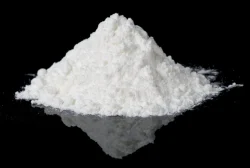 solid Guanidine NitrateView Details
solid Guanidine NitrateView Details
506-93-4
Statement: All products displayed on this website are only used for non medical purposes such as industrial applications or scientific research, and cannot be used for clinical diagnosis or treatment of humans or animals. They are not medicinal or edible.
